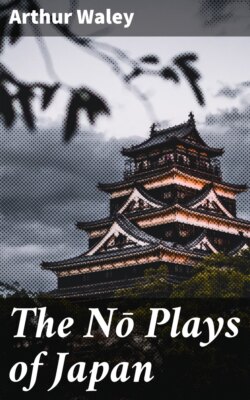Читать книгу The Nō Plays of Japan - Arthur Waley - Страница 13
На сайте Литреса книга снята с продажи.
ORIGINS.
ОглавлениеTable of Contents
Nō as we have it to-day dates from about the middle of the 14th century. It was a combination of many elements.
These were:
(1) Sarugaku, a masquerade which relieved the solemnity of Shintō ceremonies. What we call Nō was at first called Sarugaku no Nō.
(2) Dengaku, at first a rustic exhibition of acrobatics and jugglery; later, a kind of opera in which performers alternately danced and recited.
(3) Various sorts of recitation, ballad-singing, etc.
(4) The Chinese dances practised at the Japanese Court.
Nō owes its present form to the genius of two men. Kwanami Kiyotsugu (1333-1384 A. D.) and his son Seami Motokiyo (1363-1444 A. D.).[2]
Kwanami was a priest of the Kasuga Temple near Nara. About 1375 the Shōgun Yoshimitsu saw him performing in a Sarugaku no Nō at the New Temple (one of the three great temples of Kumano) and immediately took him under his protection.
This Yoshimitsu had become ruler of Japan in 1367 at the age of ten. His family had seized the Shōgunate in 1338 and wielded absolute power at Kyōto, while two rival Mikados, one in the north and one in the south, held impotent and dwindling courts.
The young Shōgun distinguished himself by patronage of art and letters; and by his devotion to the religion of the Zen Sect.[3] It is probable that when he first saw Kwanami he also became acquainted with the son Seami, then a boy of twelve.
A diary of the period has the following entry for the 7th day of the 6th month, 1368:
For some while Yoshimitsu has been making a favourite of a Sarugaku-boy from Yamato, sharing the same meat and eating from the same vessels. These Sarugaku people are mere mendicants, but he treats them as if they were Privy Counsellors.
From this friendship sprang the art of Nō as it exists to-day. Of Seami we know far more than of his father Kwanami. For Seami left behind him a considerable number of treatises and autobiographical fragments.[4] These were not published till 1908 and have not yet been properly edited. They establish, among other things, the fact that Seami wrote both words and music for most of the plays in which he performed. It had before been supposed that the texts were supplied by the Zen[5] priests. For other information brought to light by the discovery of Seami’s Works see Appendix II.
